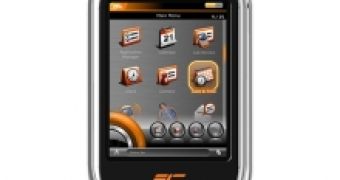OpenMoko, the company that brought the first open source smartphone, the Neo 1973, now comes with Neo FreeRunner, an improved version of their first device, targeted for the wide public. Introduced in July 2007, Neo 1973 was released only for developers and not for the mass market consumers. The handset had a huge success, being sold-out in just a few days, hence the release of Neo FreeRunner for the wide public comes naturally.
Neo FreeRunner will come with the same design as Neo 1973 and the same touch control interface. Most probably, the handset will have similar dimensions too (Neo 1973 has 120.7 x 62 x 18.5 millimeters and weighs 185 grams) - the only thing than could be considered a drawback, since most of the high-end mobile phones nowadays come in much smaller sizes.
However, the FreeRunner will bring many improvements. First of all, it has a faster 500 MHz processor, 2D/3D graphics and a brand new pack of open-source mobile applications and will be available in two GSM versions: a 850 MHz tri-band and a 900 MHz tri-band. What's great about this device is that it's completely based on open source software and it's totally customizable, offering a great freedom for the end users.
Steven Mosher, Vicepresident of Marketing at OpenMoko, said that Neo FreeRunner is definitely a better handset than Neo 1973. "We added WiFi, motion sensors, faster processing, and improved graphics, creating a compelling mass market device for open source development. The open source community was key in achieving that goal. Without them this remix of the Neo would not have been possible", said Mr. Mosher.
There is no word about the price of Neo FreeRunner, but we should have in mind the fact that Neo 1973 came with a price tag of $350. And since the FreeRunner is a more evolved handset, its price must be a higher one. The Neo FreeRunner smartphone will be presented next week at the 2008 International CES (Consumer Electronics Show) from Las Vegas and could become commercially available in the second quarter of 2008.

 14 DAY TRIAL //
14 DAY TRIAL //